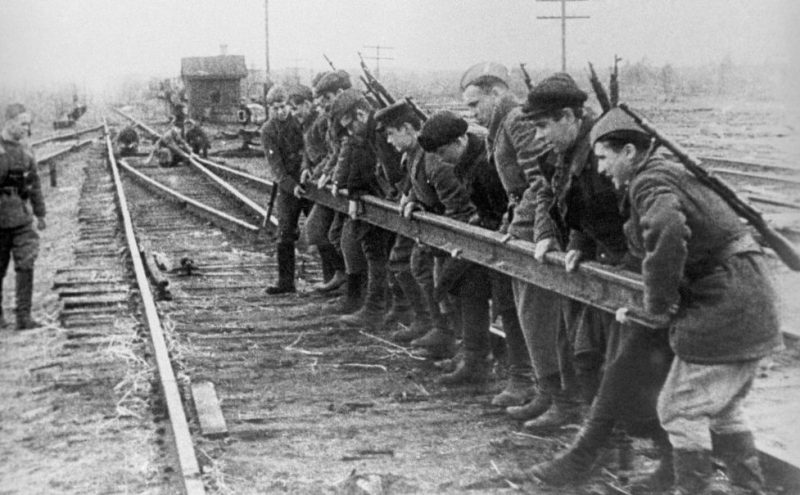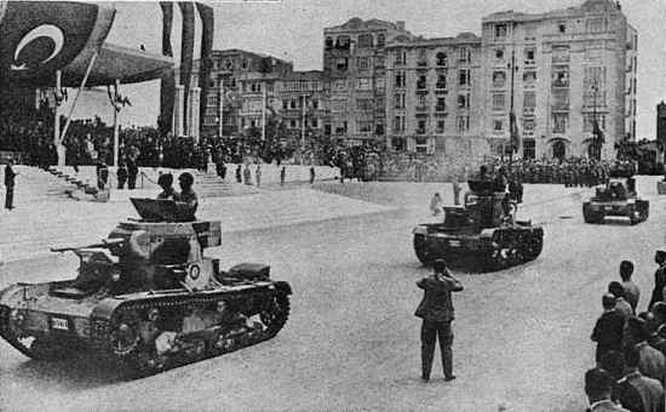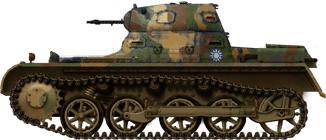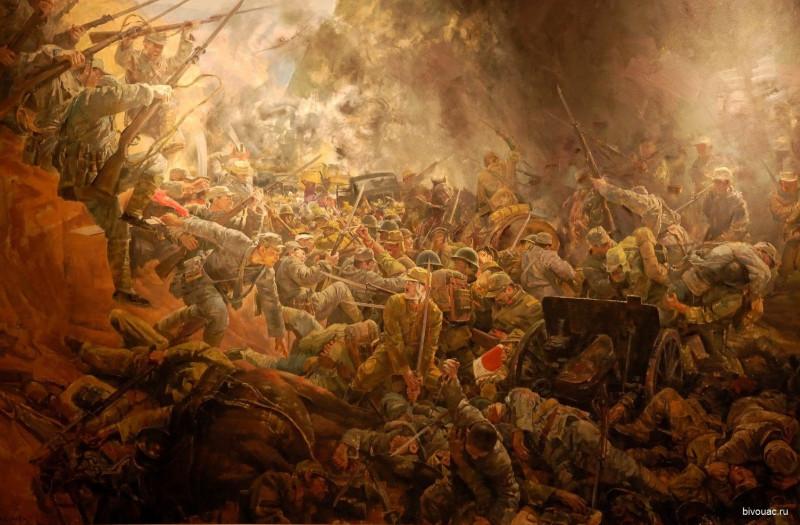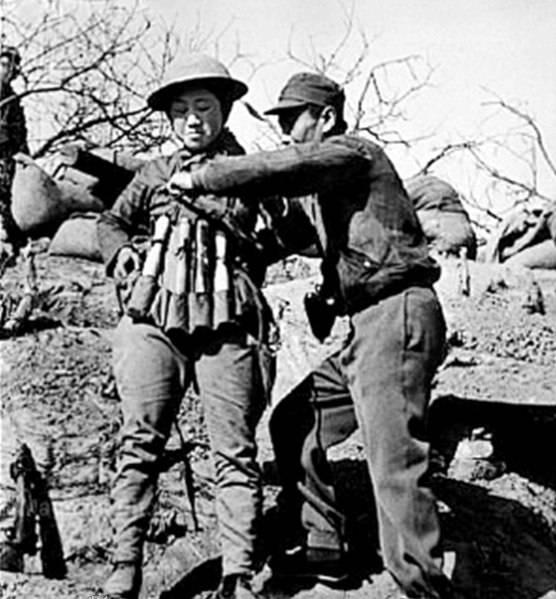And partisan movements that fought against the occupation of their countries and against Nazi Germany during World War II were in Belarus, Ukraine, Poland, Denmark, Moldova, Yugoslavia, Albania, Czech Republic.
National Liberation Army of Albania - guerrilla formation under the leadership of communists, acted during the occupation of the territory of Albania, the Axis countries. It fought against Italian and German troops, Albanian collaborators. This movement was led by Dali Ndreu and Enver Hoxha. NOAA had about 20 thousand fighters.
Resistance movement in Belgium - more than 50 thousand people took part in the Belgian resistance movement, of which more than 20 thousand participants were citizens of foreign countries. This movement was led by Jean-Francois Collard, Raymond Gore, Dominique Urbani, Marina Alexandrovna Shafrova-Marutayeva - Russian emigrant.
Communist resistance in Bulgaria - 18,300 direct partisans, 12,300 members of combat groups (underground fighters) and up to 150,000 volunteers (sympathizers). The movement was led by Georgi Dimitrov, Vasil Kolarov, Stanke Dimitrov, Georgi Damyanov, Hristo Boev and Ivan Vinarov.
National Resistance of Greece - two students, Apostolos Santas and Manolis Glezos, climbed the northwest slope of the Acropolis and tore down a Nazi flag with a swastika. The resistance was led by Kostas Perrikos, Napoleon Zervas, and Nikolaos Plastiras.
Polish underground state - appeared on January 13, 1944. They fought in the territory of pre-war Poland occupied by German and Soviet troops. The leaders of the organization were General Kazimierz Sosnkowski, responsible for the Soviet territory of occupation and Stefan Rowiecki, responsible for the German territory of occupation.
The Union of Armed Struggle was an underground Polish military organization that operated from 1939 to 1942. It operated under the command of Colonel Stefan Rowiecki, General Michal Tokarzewski-Karaszewicz, General Kazimierz Sosnkowski, and Major Emil Macielinski.
The Army of Krajowa was a Polish military organization that operated from 1942 to 1945 in pre-war Poland, Ukraine, Belarus, and Lithuania. It was subordinate to the Polish government in exile, which sat in London. General Stefan Rowiecki's division fought against the USSR. The Army of Krajowa took part in Ukrainian-Polish ethnic conflicts, among them: "Volyn Massacre", Sahrynya Massacre, Pavlokom Massacre. Against the Germans fought divisions of General Wladyslaw Sikorski, numbered from 350 to 380 thousand people.
Ludow's Guard - was created in January 1942, acted in the Polish territories occupied by Germany. The first military leader, from January to September 1942 was Marian Spychalski, and from September 1942 to December 1943 Franciszek Jóźwiak.
The National Armed Forces - were created in September 1942, as a result of the merger of several military-political organizations of Polish nationalists.
Polish Self-Defense in Volhynia - acted against Ukrainian nationalists, under the command of Wladyslaw Kohanski, J. Matuszynski and J. Wyszomirski. Wyszomirski. Most of the Polish Self-Defense units were destroyed by UPA units. The rest were destroyed by the Germans.
Jewish Military Union and Jewish Fighting Union - organizations of Polish Jews, consisting of former soldiers of the Polish Army. They operated in Lublin, Krakow, Lvov, Stanislawow and Warsaw, the number of organizations reached 1000 people. Almost all of them died.
Partisan movement on the territory of Belarus - had a nationwide character. In 1942 their number exceeded 370 thousand people.
Belarusian Liberation Army "Black Cat" - the armed wing of the Belarusian Independent Party. It fought against the Soviet power from 1943 to the end of 1950. It counted from 3500 to 5500 fighters. The commanders at different times were Mikhail Vitushko, Eugen Zhikhar, Anton Bandyk, Nikolai Shkeleonok, Nikolai Khvezko. This military association included the battalion "Dahlwitz" (a special intelligence and sabotage unit of the Abwehr, created from among Belarusian nationalists in Dahlwitz in East Prussia, numbering up to 800 people and thrown into Belarus on November 17, 1944).
Myadel-Smorgon anti-communist underground - created in October 1944 by Rostislav Lapitski. The underground was finally defeated in October 1950. Most of the participants were imprisoned from 10 to 25 years, and four of them were even shot.
Karelian-Finnish partisans - about 1800 people.
Partisan movement on the territory of Ukraine - the total number was estimated at 220 thousand people in 53 partisan formations, 2145 partisan detachments and 1807 partisan groups. The head of the USHPD was T. A. Strokach, Deputy People's Commissar of the NKVD of the Ukrainian SSR.
Partisan detachments acting on the territory of Ukraine on the side of fascist Germany - Polessky Vine Cossacks in the number of 500 people. Ukrainian Insurgent Army through the ranks of which, for the history of its existence from 1939 to 1956, passed about 400 thousand people.
Polesskaya Sich - the most famous Ukrainian nationalist organization at the regional level. The number reached up to 4000 fighters, who were destroyed in the fall of 1943.
Ukrainian People's Self-Defense - UPA-West. The number reached 6,000 partisans. It was disbanded in December 1943.
Bukovyna Ukrainian Self-Defense Army - operated in Ukrainian Bukovina and Bessarabia. BUSA closely cooperated with OUN-UPA and had up to 1500 fighters. It was led by a village teacher Vasyl Shumka, nicknamed "Lugovoi".
Front of the Ukrainian Revolution - operated in 1942-1943 in Volyn under the leadership of Volodymyr Yavorenko. The unit, about 600 men, was destroyed by the Bander wing of the Organization of Ukrainian Nationalists at the end of 1943.
Bessarabia - 16 combat groups totaling 600 men and 8 partisan detachments totaling 160 men were created. Almost all of them were defeated by the Romanian special services.
Resistance Movement of Czechoslovakia - the day of its creation is considered October 28, 1939.
The People's Liberation War of Yugoslavia was fought from July 4, 1941 to May 15, 1945 and ended with the complete victory of the Yugoslav partisans and the liberation of the country from occupation. About 800 thousand patriots took part in the fighting. In the history of Yugoslavia this war occupies exactly the same place as the Great Patriotic War in the history of the USSR and Russia.
The Yugoslav army in the homeland is the Chetniks. A paramilitary Chetnik monarchist organization of Serbian nationalists, under the leadership of Dragoljub (Draži) Mihajlović. In 1943 it numbered up to 70,000 people. The supporters and associates of General Draže collaborated with the Italian occupation troops.
https://dzen.ru/a/XZpWSXnCbgCuaNF3
